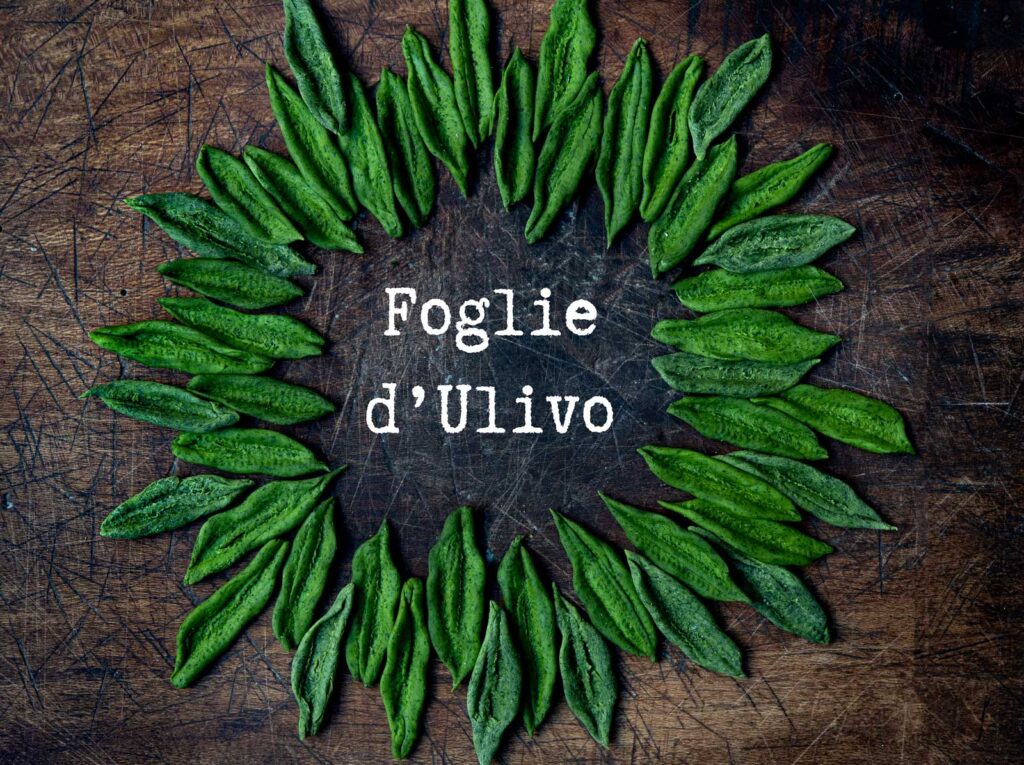Foglie d’ulivo or olive leaves fall into a category of pasta known as strascinati, commonly found in Southern Italy, particularly Campania, Puglia, Basiliccata and Calabria. This category also includes cavatelli (rolled with one finger), as well as orecchiette; ceccatelli (rolled with two fingers); and those rolled with three, four or eight fingers. Each producing a longer or shorter pasta shape, each with its own name.
The common feature of strascinati is how they’re formed — drawn across a wooden board or other type of utensil, with the fingers or sferre, the latter, a typical knife of Puglia that has no handle so it can be used horizontally to make long strascinati.
Strascinati can also invoke objects from nature, as is the case of foglie d’ulivo; as well as faianelle which resemble carob pods and palmatielli which resemble palm leaves.
As for the foglie d’ulivo, the addition of spinach gives it its distinct green color. I often find that when you add vegetables to dough, the extra liquid makes the dough a bit too wet. So, instead I first dried some spinach in a dehydrator for several hours until completely dry, then ground it to a fine powder in a spice grinder. Perhaps too much extra work, but all in the name of cooking and experimentation, and of course, pasta.
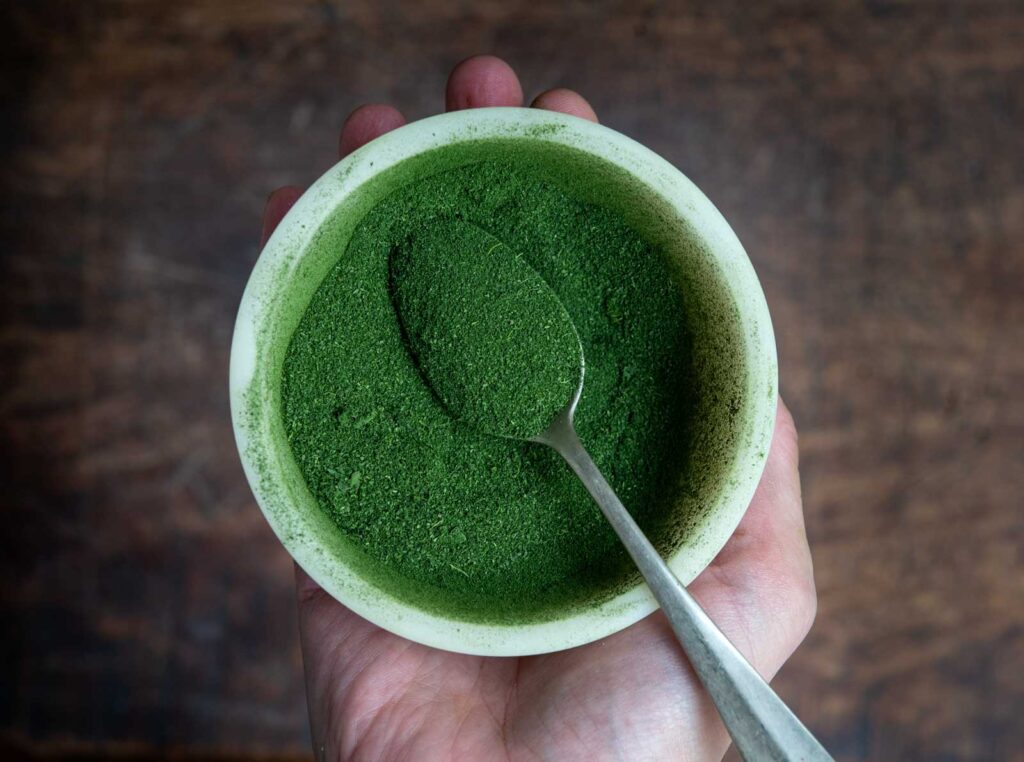

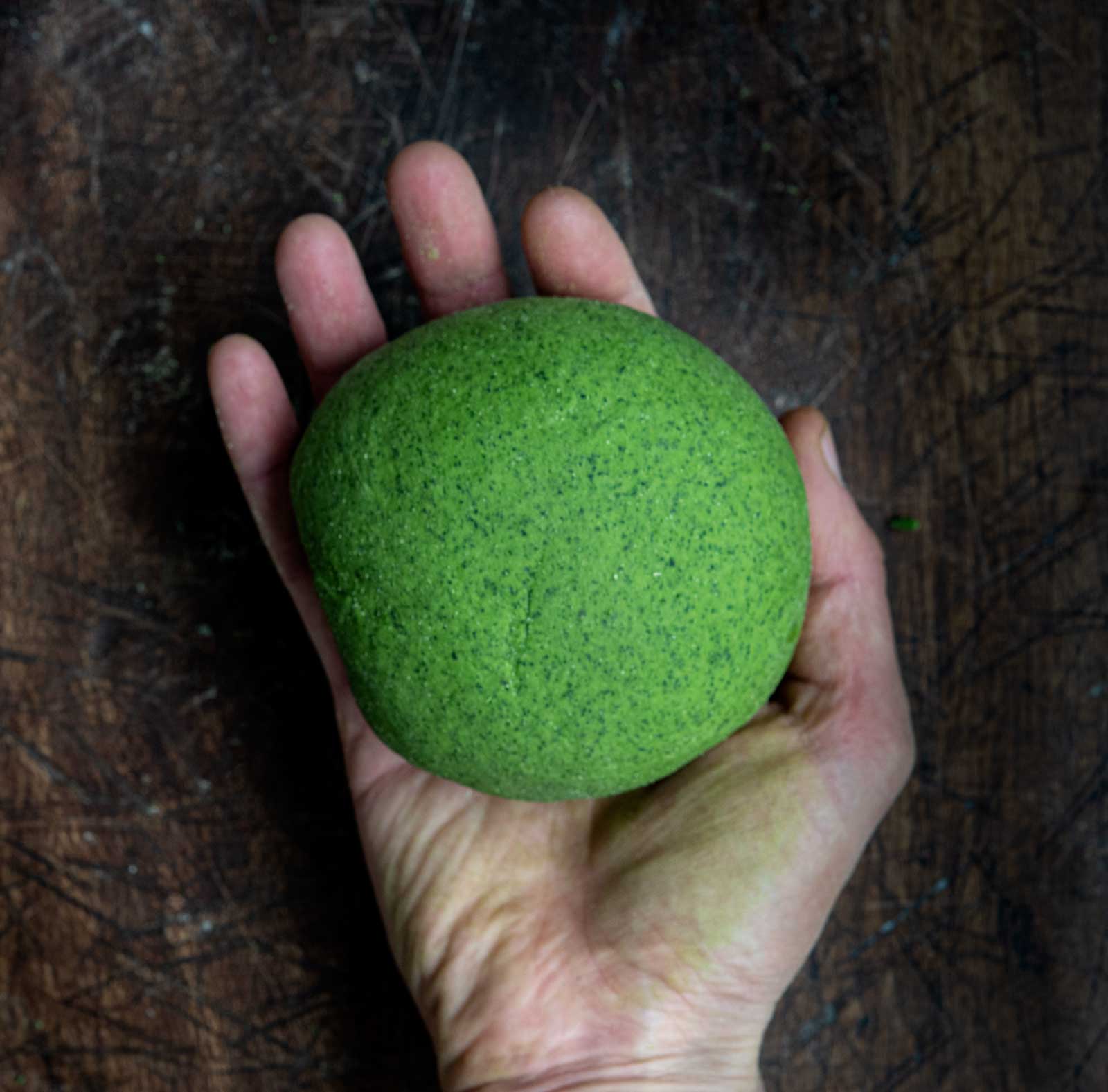
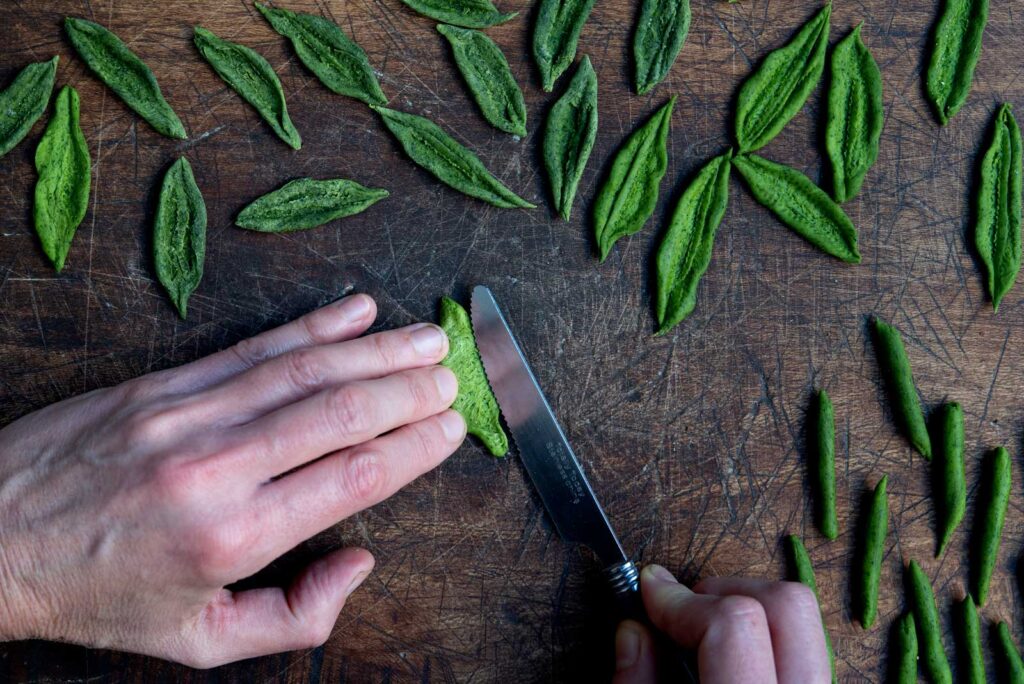
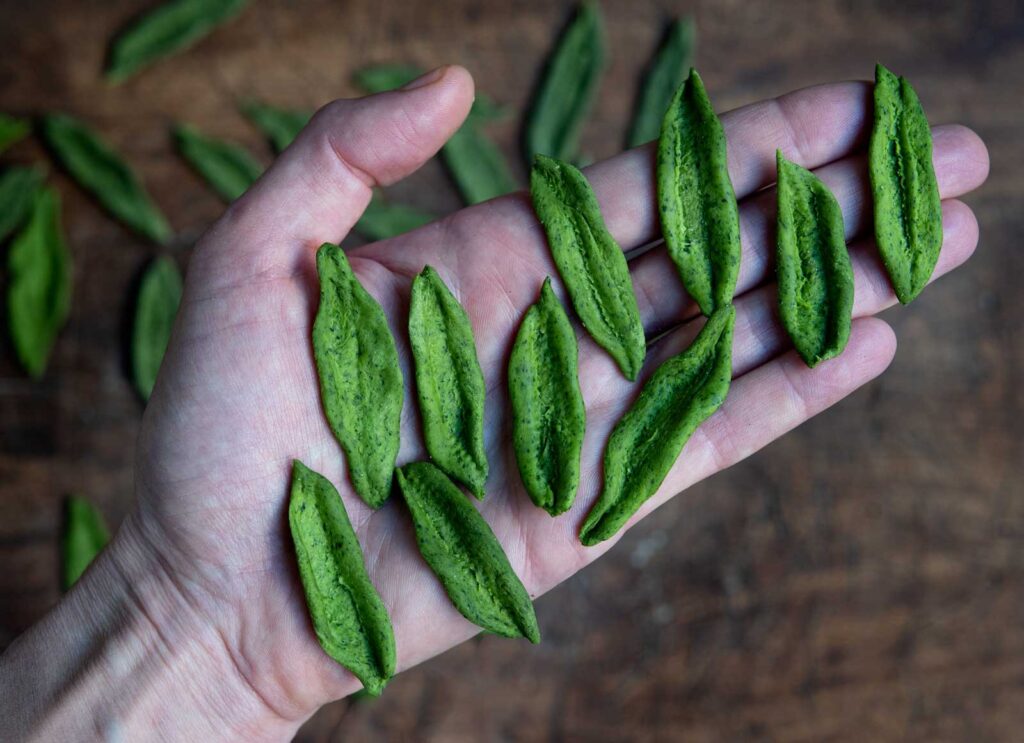
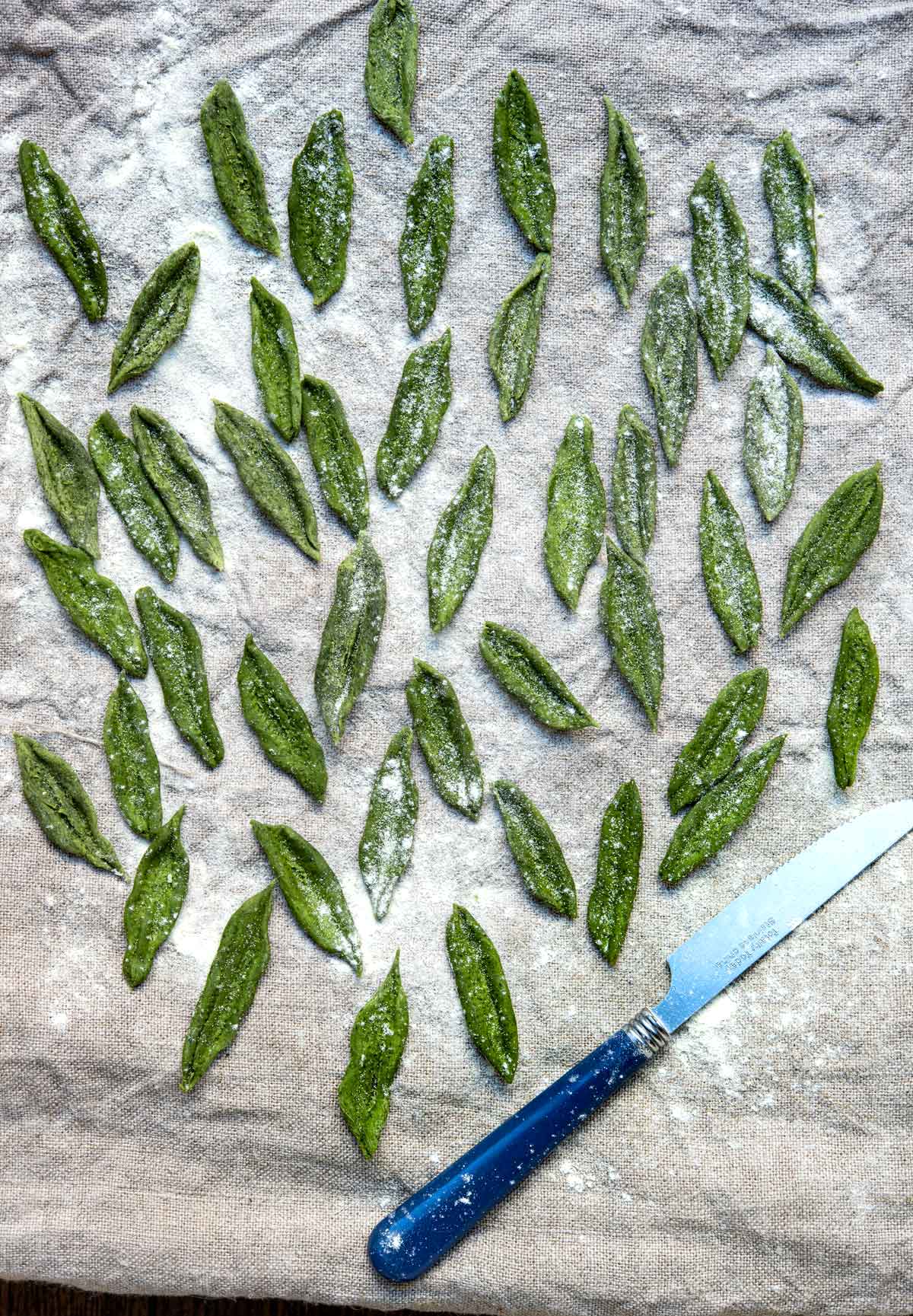
Served in a simple tomato sauce, with a little ‘nduja for added richness and spiciness.
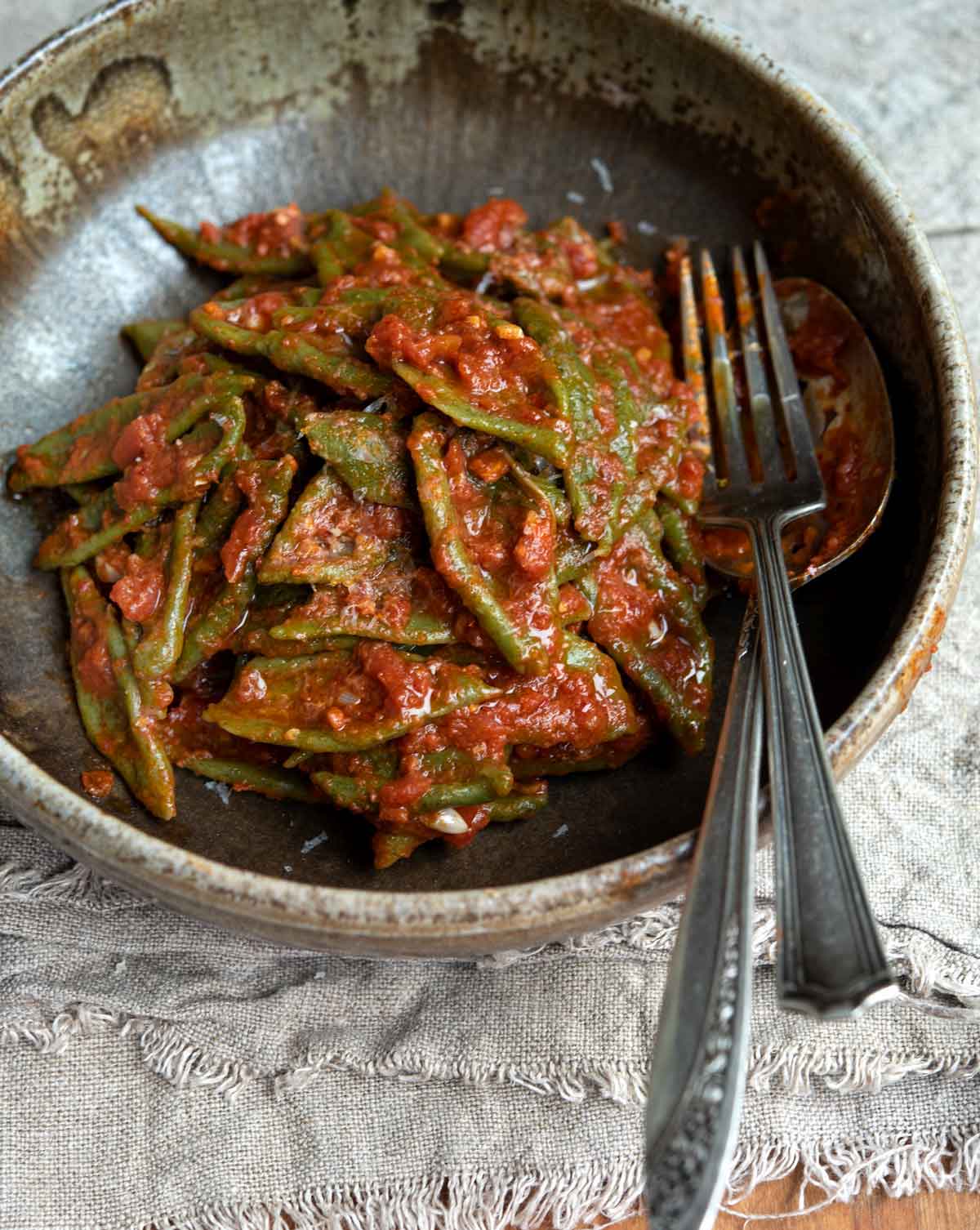
Foglie d’Ulivo
Ingredients
- 400 grams finely ground semolina/semola rimacicnata
- ~400 ml room temperature water
- 5-6 tbsp deydrated spinach powder (see note below)
- pinch of salt (optional)
Instructions
- Mound the flour on a wooden board, make a small well in the center. Add the water and spinach powder to the well. Use a fork to start incorporating the flour into the spinach powder/liquid. Gradually incorporate more and more flour from the wall of the mound until a dough begins to form. Continue until the dough has formed a shaggy ball. Now, begin to knead it with the heel of your hand, pushing it with some force across the surface until the dough is smooth and elastic, about 10 minutes.
- Cover with plastic and let rest for 30 minutes.
- Remove a piece of dough, keeping the rest covered. Then, using the palms of your hands, roll the dough into a long, thin rope, about ¼ inch thick. Cut the rope into roughly 1 ½ inch pieces. Roll the ends of each piece between the palms of your hand to taper the ends.
- Hold the long edge of a piece of dough with your fingers to prevent it from sliding and with a butter knife at a slight angle, apply gentle pressure with the serrated edge and drag the knife away from you so that it spreads the dough thin and flat and resembles a leaf.
- Line a baking sheet with semolina to prevent sticking. Transfer the finished foglie d'ulivo to the baking sheet in a single layer and repeat the process until the dough is gone.
- Cook pasta right away or let it dry at room temperature for a couple of hours. Alternatively, freeze the pasta on the baking sheet until frozen, about 30 minutes and transfer to a freezer-safe storage bag/container. The frozen pasta can go straight from the freezer into a pot of boiling, salted water.

